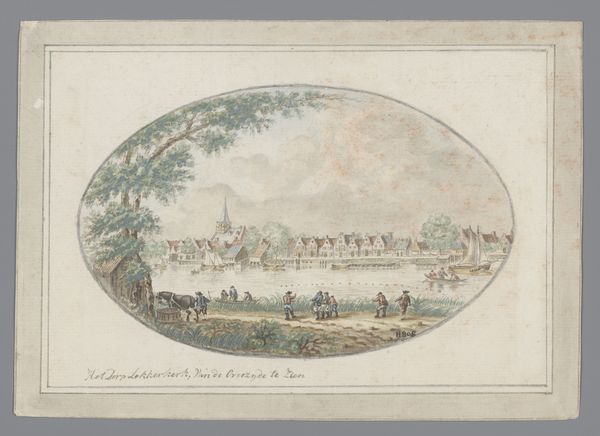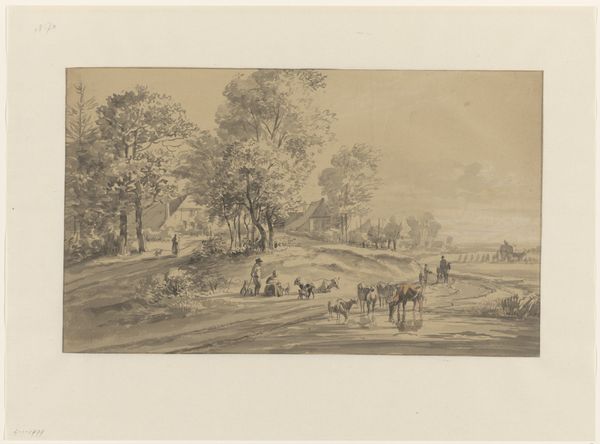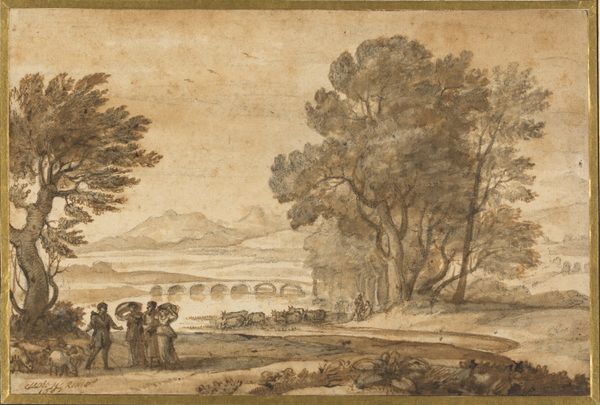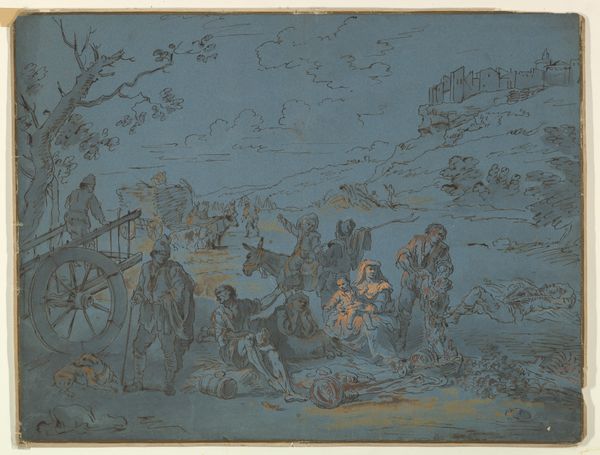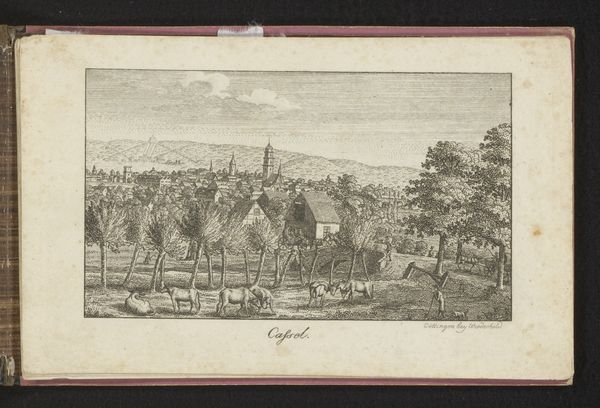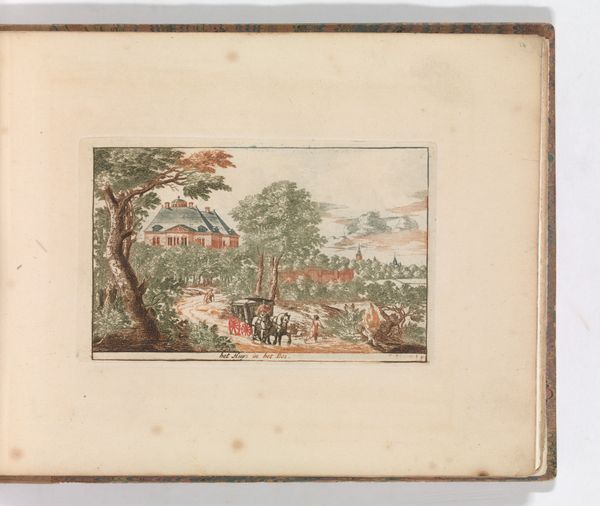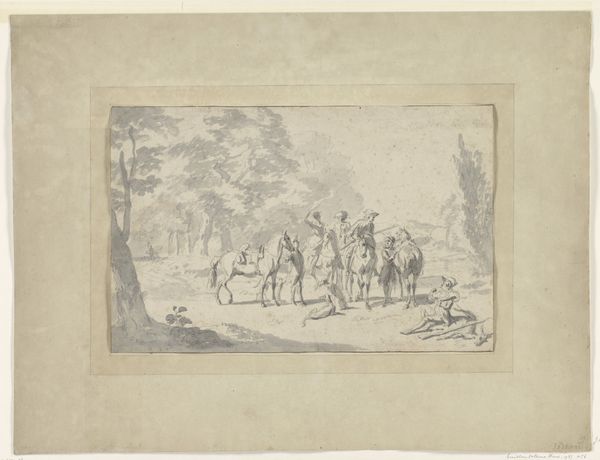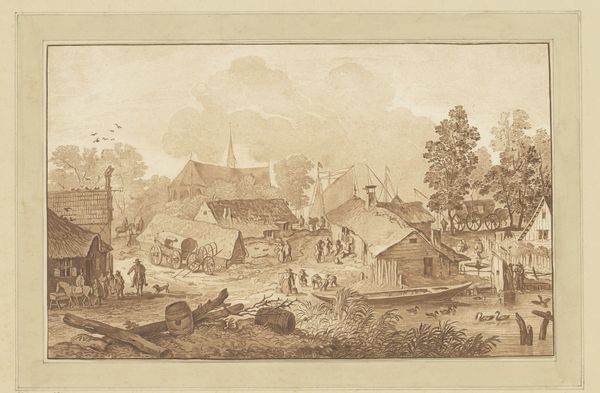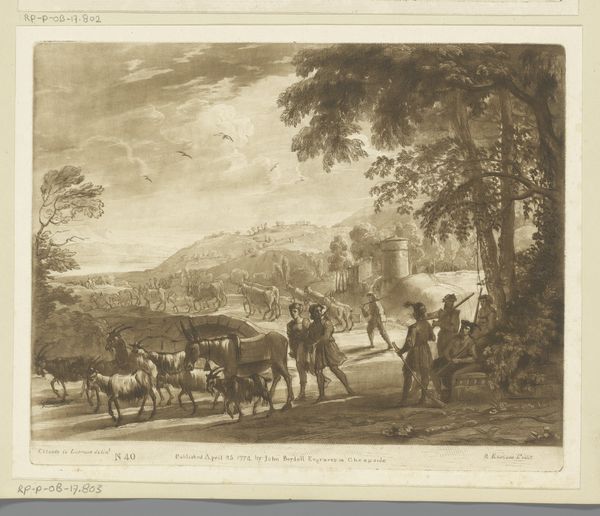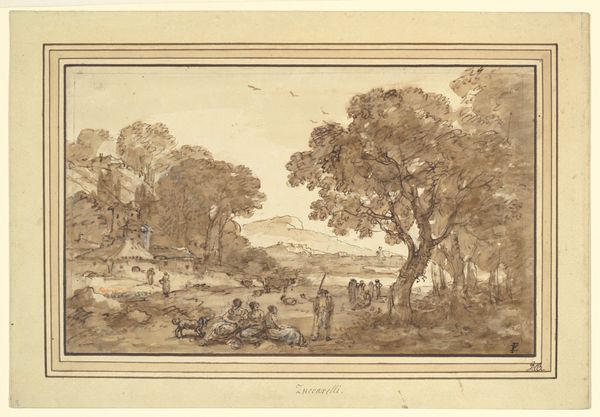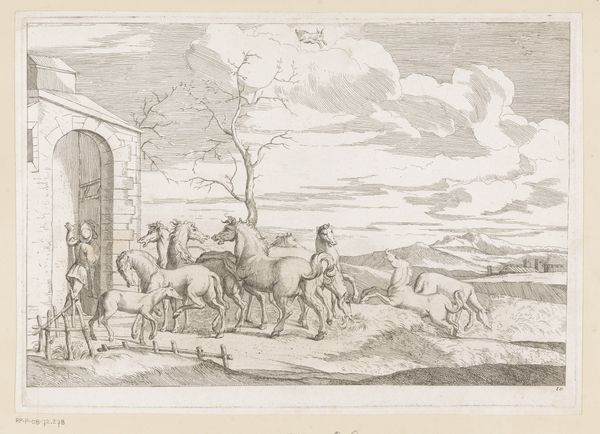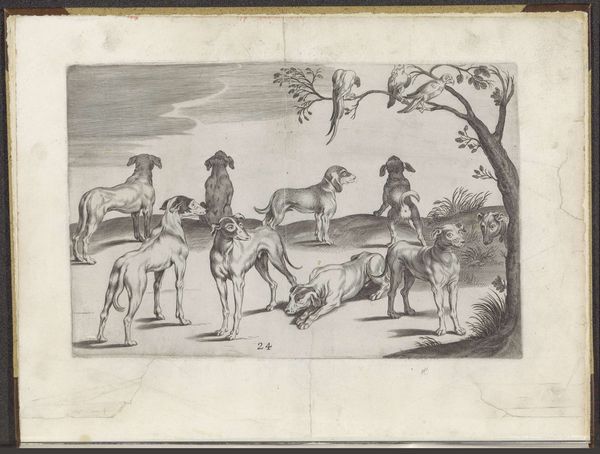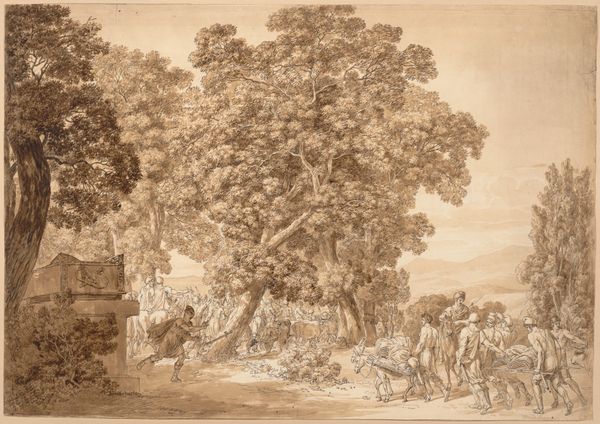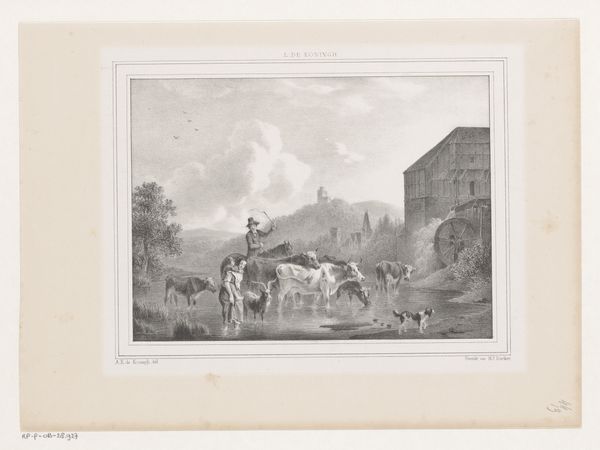
painting, oil-paint
#
water colours
#
narrative-art
#
painting
#
oil-paint
#
landscape
#
watercolor
Dimensions: overall: 46 x 62.1 cm (18 1/8 x 24 7/16 in.)
Copyright: National Gallery of Art: CC0 1.0
Curator: Today we’re looking at George Catlin’s watercolor, “The Cheyenne Brothers Starting on Their Fall Hunt,” made sometime between 1861 and 1869. Editor: My initial impression is one of vastness and quiet anticipation. The eye is led from the immediate family grouping in the foreground across a sweep of land towards the hazy, blue-tinged mountains. There’s an emotional depth achieved through a subtle balance of form and light. Curator: Right. This work gives us insight into the seasonal cycles and labor practices of the Cheyenne people in the 19th century. You see how central hunting was – indicated by the drying racks of meat by the tipi. Notice also the emphasis on family and community, the reciprocal relationships between humans, animals and their shared environment. Editor: Agreed. The color palette is restrained, dominated by earth tones, punctuated by the subtle highlights in the clothing of the figures. Catlin expertly uses these chromatic contrasts to create depth, and draws attention to key figures in the scene. There is tension and compositional balance, drawing us into their departure preparations. Curator: I'm also intrigued by the materiality of this artwork itself – watercolor was a readily portable medium that aided Catlin in documenting what he saw, on the spot, emphasizing process and direct experience in his depiction of Indigenous life. The work was inevitably influenced by the colonial context of that period. Editor: Yes, though I'm drawn more towards considering how the application of the medium is itself used to depict space. Catlin masterfully renders gradations of tone to evoke atmospheric perspective. It’s an astute demonstration of pictorial strategies used to imply expansive space in two dimensions. Curator: His watercolor allows for fluidity, yet there are certain details like the drying meat that give insight into labor. Also consider how this narrative participates within the historical representations and consumptions of such depictions, too. Editor: For me, the beauty of the painting is within the relationship that is established through color, form, and composition. Curator: Thank you. Thinking about the cultural exchanges of the time, and the work's materiality helps bring a deeper perspective to our appreciation. Editor: It’s a beautiful work which demonstrates that close examination of color and composition allow us to deeply appreciate an artwork, such as this one.
Comments
No comments
Be the first to comment and join the conversation on the ultimate creative platform.

